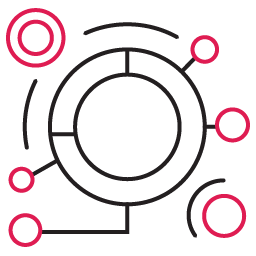Jira Service Management Best Practices: Tips for Optimizing Service Desk Operations
Atlassian’s Jira Service Management (JSM) is a widely used IT service management (ITSM) and Enterprise Service Management (ESM) tool. It brings together IT, operations, development, and business teams to increase efficiency and encourage cross-team collaboration. With JSM, teams have immediate access to workflow automation to help them triage, track, and resolve internal issues faster.

In this way, Jira Service Desk evolved into JSM to provide ITSM capabilities within the same tool. This enabled service desk operations to cater to ITSM activities, including incident management, knowledge management, and change management.
JSM supports a modern, effective, and scalable approach to service desk operations, and ITSM at large. But like any tool you’re working with, you can optimize JSM to improve the efficiency of your service desk operations.
This article highlights best practices you can implement to help refine JSM implementation and boost service desk operational efficiency.
Best Practices for Optimizing JSM Service Desk Operations
A service desk is a communications platform that allows users to interact with various teams or departments within the organization. While service desks (previously called help desks) were initially designed for technical teams to resolve issues, now even non-technical teams have adopted this approach.
A service desk aims to provide high-quality service to users as fast as possible. It focuses on offering top-notch customer service, whether that customer is an internal employee or a customer outside the organization.
JSM’s flexible, collaborative approach to ITSM and ESM enables your service desk to better streamline your service delivery processes for both customer-facing and staff-facing services. Some of JSM’s features and benefits include:
- Automation tools to track and resolve customer and employee issues
- An extensive knowledge base and self-service portals
- Rich reporting features to gain actionable insights into service trends in your organization
But for your service desk operations to run efficiently and effectively, you need to search for opportunities for optimization and implement them.
The following sections highlight four best practices that can help you optimize your JSM service desk operations and improve its return on investment (ROI).
Minimize Toil With Automation

For example, you don’t have to manually assign team members to specific tickets. Instead, use JSM’s automation feature to assign the next ticket to the team member with the least workload. This feature avoids overburdening a specific individual and lets your team resolve tickets faster.
Automation also leads to significant cost savings, and an improved customer experience. Automating customer requests or incidents means your personnel spend less time on manual work and can instead focus on more critical tasks.
Jira Service Management’s rules function makes automation easy. The function has three components:
- Trigger: the action that triggers the automation
- Condition: a condition to narrow the rule’s scope via the IF condition
- Action: what happens when the rule runs after meeting the condition
Additionally, rules can include Branches, an optional layer that allows for executing repeated conditions and actions on groups of tickets
The rules function makes it easy to automate manual tasks at scale. For instance, you might schedule a quick search for tickets with a “Waiting for Customer” status every two days to help you follow up with those customers and resolve their issues faster.
You can identify other points of contention by analyzing your ITSM workflows. This process involves spending time combing through every workflow in your team, which makes it tedious. But it saves you time, money, and resources in the long term.
You can simplify this process by working with an Atlassian Solution Partner like Cprime to pinpoint which tasks can be automated. Atlassian Solution Partners can also review current processes and suggest improvements beyond automation.
Maintain Accurate SLAs in JSM
You can use JSM’s reporting feature to view progress toward your service level agreements (SLAs), and you can define, implement, adjust, and review SLAs within the same tool.
By default, the JSM dashboard provides access to four reports: Workload, Satisfaction, Requests deflected, and Requests resolved. These reports help determine how quickly requests are handled and ascertain current customer satisfaction levels.
You can also customize these reports to show specific metrics and key performance indicators (KPIs) that you’ve deemed essential. For example, you might create a report to see how and when your team handles specific issues. Based on the mean time to resolution (MTTR), you can decide if they’re meeting your SLAs on time. This data helps inform decision-making about staffing levels and helps you identify areas where specific goals are unmet, and where more resources or training may be necessary.
Customer service performance reports also offer insights into customer expectations and preferences. These reports help you identify areas for improvement and incorporate new strategies to increase customer satisfaction scores and improve service delivery.
These reporting features help you make informed decisions using real-time performance data. You can use the resulting insights to build customer trust and give ITSM teams a clear direction for meeting SLAs.
Build and Maintain a Comprehensive Knowledge Base

Confluence enables enterprises to build a robust knowledge base with features like advanced search, page tree, best practice templates, and, most importantly, JSM integration. Use this knowledge base to create a comprehensive library of resources, including:
- How-to guides
- Troubleshooting articles
- Frequently asked questions
- Process documentation
- Product documentation
Customers and internal teams can access this information, enabling a self-serve option. A recent study found that 69 percent of customers want to solve issues independently, making this option a great fit for both customers and support teams.
A solid knowledge base also makes it easier for internal teams to find answers without creating new tickets or contacting support. By integrating JSM with Confluence, you can divert repetitive support tickets using a self-service document that details how to troubleshoot them. This fix reduces time spent on troubleshooting issues, resulting in a more productive workforce.
Templates are available
JSM and Confluence offer several templates to get you started, and the option to create custom templates to support your ITSM practice. It also helps you update resources on the go, ensuring everybody can access timely and accurate information. Plus, IT teams can create documentation within the service desk in real time, making it easier to share the articles without disrupting the agent’s workflow.
Monitor analytics with reports
Another valuable feature of the knowledge base is how it allows you to monitor the analytics of each article or guide. For example, you might use this to identify topics that receive more traffic or topics that deflect requests.
Here are two key reports you should look out for:
- Requests deflected: how often customers found an article helpful enough that they no longer needed to register a ticket
- Requests resolved: A summary of requests resolved with an article, without an article, and deflected with an article.
These reports help you identify valuable topics and areas that need more resources. An internal study by Atlassian found that users that use this integration can deflect 45 percent of their customer service requests. Ultimately, it enables you to reduce the number of support tickets, address issues faster, and make your IT teams more efficient.
Track Assets and Configurations with JSM Assets
In 2021, 62 percent of IT professionals used an issue-tracking tool like JSM as their single source of truth during incidents, particularly for individuals leveraging artificial intelligence (AI) capabilities to trigger incidents.
JSM’s Assets feature is one reason JSM makes such an excellent incident management tool. Formerly known as Insights, the Assets capability helps correlate specific assets and configuration items (CI) to a particular issue. As a result, incident teams can focus on resolution instead of spending time figuring out which IT assets an incident affects.
The Assets feature is also beneficial when resolving complex incidents or changes with a lot of related CIs. Incident managers can determine whether the issue is driven by a single CI or caused by several related CIs, and teams can quickly identify potential root causes by linking objects associated with the incident. JSM’s Assets feature even helps with change management, since you can view the impact of changes before they’re made and avoid expensive mistakes.
Use JSM Assets to manage your organization’s IT inventory, too. The Assets feature helps track hardware equipment, software licenses, and other physical resources in one centralized location. This centralization makes it easy to assign assets to specific users and monitor their usage in real time. It also allows for better budget forecasting and resource allocation across various departments within the organization, helping you maximize efficiency and minimize the risk associated with changes and deployments.
Conclusion
Service desks are critical to effective ITSM operations as a central point of contact for users to request and resolve issues. They operate as valuable triage zones where incidents can be quickly identified and addressed.
Jira Service Management’s high-velocity ITSM capabilities enable you to streamline your ITSM operations easily. But to maximize your JSM implementation and deliver the highest quality service experiences possible, you must follow the best practices outlined here.
As an Atlassian Solution Partner, we’re experts in all things JSM. With deep technical expertise and partnerships with multiple companies in the Atlassian Marketplace, we can optimize your service desk operations for maximum efficiency.



